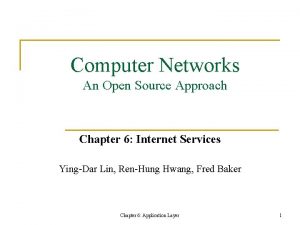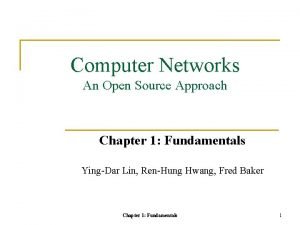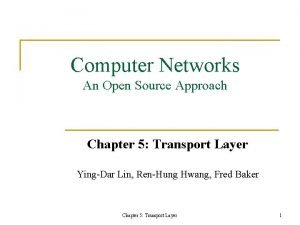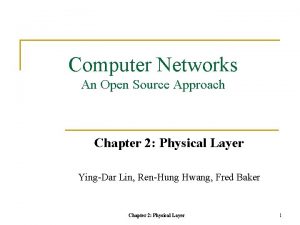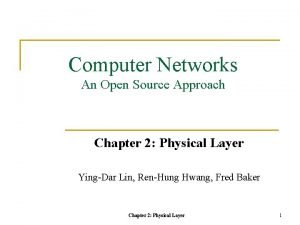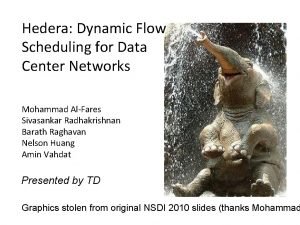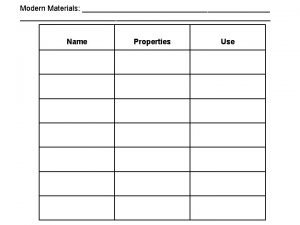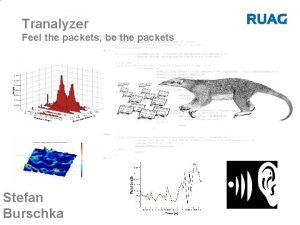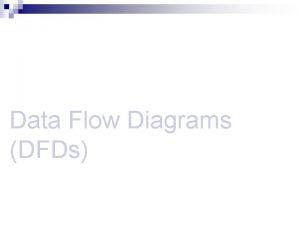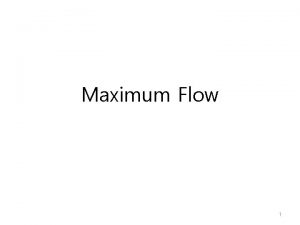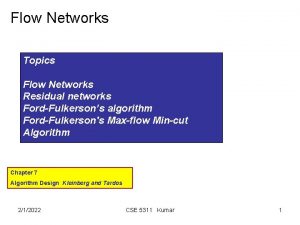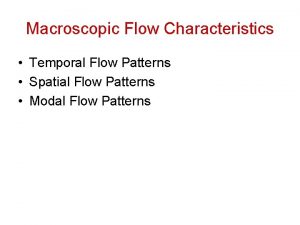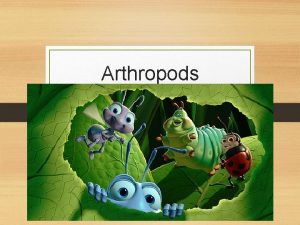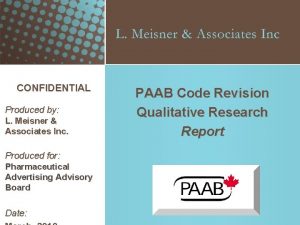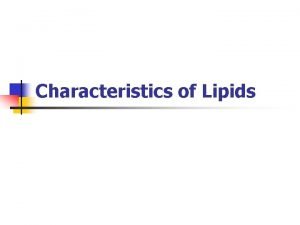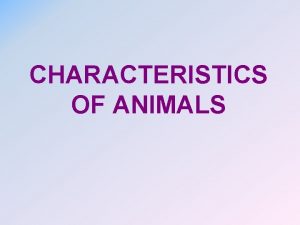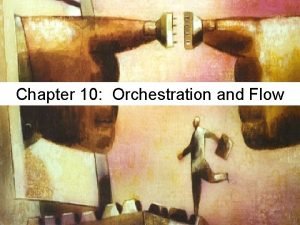Flow Networks General Characteristics source materials are produced




















- Slides: 20

Flow Networks • General Characteristics – source : materials are produced at a steady rate – sink : materials are consumed at the same rate – flows through conduits are constrained to max values • Applications – liquid flow through pipes – current flow through a circuit – information in a communications network • Maximum flow problem - what is the greatest flow of materials from source to sink that does not violate any capacity constraints?

Flow Networks • G = (V, E) is a directed graph – edge (u, v) E has capacity c(u, v) 0 – two distinct vertices: source s and sink t • The flow f : V x V R satisfies the following: – There is no net flow between vertices u and v if there is no edge between them

Example of a Flow Network • (a) shows the maximum shipping capacities from the source Vancouver to the sink Winnipeg • in (b) the |f| = 19 and one possible flow is shown • it turns out 19 is not the maximal flow; experiment with this network on the next page and try to find the maximal flow

Find the Maximal Flow

A Closer Look at Two Vertices • Only positive flows are shown; the net flow from v 1 to v 2 is the actual flow from v 1 to v 2 minus the actual flow from v 2 to v 1 ; net flow can be negative • Cancellation allows for shipments in opposite directions, as in (c), to be replaced by shipments in one direction only, as in (d)

Multiple Sources and Sinks • Problems with multiple sources and sinks can be reduced to the single source/sink case • A supersource with outgoing capacities to the multiple sources is added • A supersink with incoming capacities from the multiple sinks is added

Identities involving Flows • A sample proof using these identities |f| = f(s, V) by definition = f(V, V) - f(V-s, V) by lemma = f(V, V-s) by lemma = f(V, t) + f(V, V-s-t) by lemma = f(V, t) by flow conservation in order words, the value of a flow is the total net flow into the sink

The Ford-Fulkerson Method • New Ideas – residual flow networks - these show where extra capacity might be found – augmenting paths - the path along which extra capacity is possible – cuts - used to characterize the maximum flow possible in a network • The basic method

Residual Networks • Residual capacity and network – cf (u, v) = c(u, v) - f(u, v) – the residual network is a graph with the same vertices but the edges are the residual capacities – Ef = { (u, v) V x V : cf (u, v) 0 }

Relationships Between Flows • Let Gf be a residual graph induced by flow f – consider a flow f’ in the residual graph – the sum of the flows |f| + |f’| is a new flow |f + f’| in the original graph • This is proved in the following lemma

Augmenting Paths • An augmenting path is a simple path from s to t in the residual network – the residual capacity of the augmenting path p is the maximum additional flow we can allow along the augmenting path – cf (p) = min {cf (u, v) : (u, v) is on p }

Cuts of Flow Networks • Definitions – a cut(S, T) of flow network G=(V, E) is a partition of V into S and T= V - S such that s S and t T – the net flow across a cut is f(S, T), the capacity is c(S, T) – f(S, T)=f(v 1, v 3)+f(v 2, v 4)=12+(-4)+11=19 – c(S, T) = c(v 1, v 3) + c(v 2+v 4) = 12 + 14 = 26

Max-flow, min-cut Theorem

Ford-Fulkerson Method • Analysis – lines 1 -3 take (E) time – lines 4 -8 take at most |f*| time since the flow value has to increase by 1 (for integer values) each time – this may be acceptable in most cases but not all, as we will see shortly

EXAMPLE EXECUTION • to the left are successive iterations of the while loop • to the right are the residual graphs • the final solution is shown in (d)

Avoiding Worst Case Behavior • The behavior shown above should be avoided: the maximum flow is 2, 000; if the path with 1 is selected, there are 2, 000 augmentations • Edmonds-Karp algorithm – use a breadth-first search to find the shortest path from s to t in the residual network – We will prove the complexity is O( V E 2 )

Edmonds-Karp algorithm • Some fundamental results

Maximum Bipartite Matching • A Sample Problem – a bipartitle graph has two disjoint subsets of nodes – what is the maximum possible matching? • An Application – let L be a set of machines and R a set of tasks – an edge means that a particular machine can perform a particular task – the maximal matching provides work for as many machines as possible in parallel

Conversion to Maximum Flow – Have a single source s connected to each L and a single sink connected to each R – assign a unit capacity to every edge in E’ – Flows are constrained to integer values – The solution to the maximum flow problem gives us a solution to the maximum bipartite matching problem

Theoretical Foundations
 Antigentest åre
Antigentest åre A switch in a datagram network uses
A switch in a datagram network uses Backbone networks in computer networks
Backbone networks in computer networks Computer networks an open source approach
Computer networks an open source approach Bda max40
Bda max40 Computer networks an open source approach
Computer networks an open source approach Computer networks an open source approach
Computer networks an open source approach Computer networks an open source approach
Computer networks an open source approach Hedera: dynamic flow scheduling for data center networks
Hedera: dynamic flow scheduling for data center networks Cant stop the feeling go noodle
Cant stop the feeling go noodle Usefulness and harmfulness of materials
Usefulness and harmfulness of materials Man made materials
Man made materials Adapting and adopting materials
Adapting and adopting materials Direct materials budget with multiple materials
Direct materials budget with multiple materials Uses of smart and modern materials
Uses of smart and modern materials General purpose heat source
General purpose heat source Ciap functional flow input source example
Ciap functional flow input source example Tranalyzer
Tranalyzer Source and sink analysis in software engineering
Source and sink analysis in software engineering Dfd completeness
Dfd completeness Fzero 2-100 review
Fzero 2-100 review



